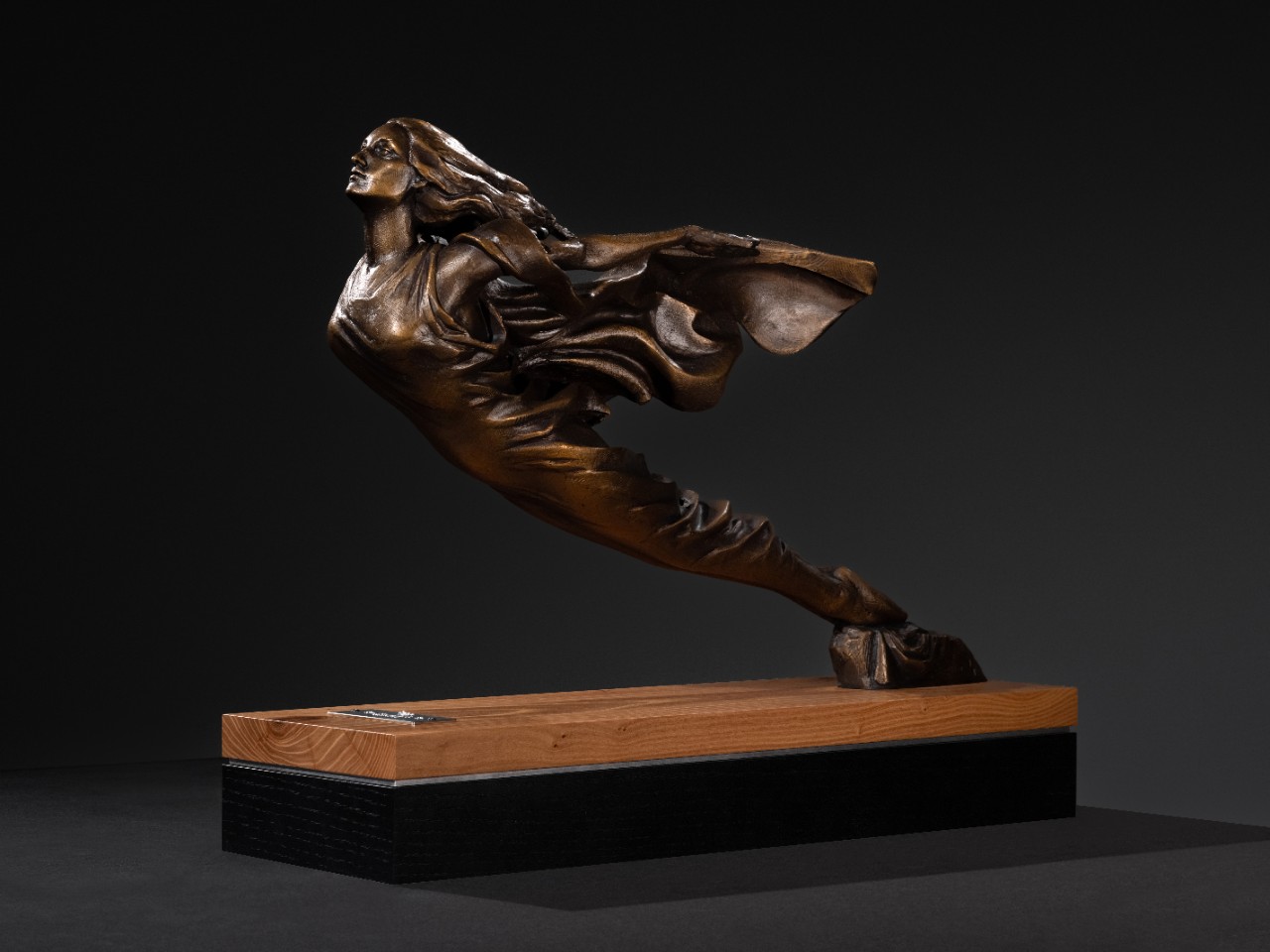Envisioned to represent the brand’s grace and spirt of unsurpassed swiftness and power, the Cadillac Goddess adorned the hoods of most models from 1930 through 1956, and appeared again on the bespoke 1959 Eldorado Brougham.
It returns on the all-new CELESTIQ as a homage to Cadillac’s illustrious design history and a new symbol of the brand’s personalized, handcrafted artistry.
“CELESTIQ is the beginning of the future for Cadillac, conveying the artistic innovation the brand is bringing to luxury electric vehicles,” said Bryan Nesbitt, executive director of Cadillac Design. “We wanted this flagship EV to embody the significant heritage of the brand in a truly meaningful way, with the Goddess representing the absolute pinnacle of bespoke craftsmanship from Cadillac.”
Today’s Goddess can be found on the front quarter panel and within the multi-function controller on the center console of the CELESTIQ. The front quarter panel trim piece is milled from billet aluminum, polished, brushed and tinted, encasing the Goddess molded in glass. The Goddess in the infotainment controller is positioned center stage within the interior and is backlit and also encased in glass. The aluminum dial turns independent of the glass Goddess, ensuring she always remains upright.
The CELESTIQ charge port is surrounded by a ring of light that responds when the vehicle is plugged in. As the client initiates and ends the charging process, they will receive visual cues that their vehicle is charged. Clients will notice a lit Goddess emblem above the charge port — a visual representation of how electrification is the soul of CELESTIQ and Cadillac as a whole.
“The Goddess has always been a symbol of progress and aspiration throughout the history of Cadillac,” said Crossley. “Her return on CELESTIQ showcases our forward motion, as we enter a new era of craftsmanship and design.”
From Moto-Meters to Mascots
In the early days of the automobile, vehicles did not have gauges that kept tabs on coolant temperature. That led to the creation of the Moto-Meter, an accessory temperature gauge mounted on the radiator.
It became ubiquitious, but by the 1920s, manufacturers began to incorporate coolant temperature gauges in the interior instrument clusters of their cars, making the Moto-Meter instantly obsolete. Owners, however, still desired hood-mounted ornamentations as symbols of style and luxury.
More elegant versions were created (without the temperature gauge) to add style and personalization to vehicles. They took many forms, but typically incorporated distinctive animal or human mascots suggesting speed or strength.
In 1930, the Cadillac Goddess made her first appearance, along with the Heron mascot. The Heron lasted only four years, giving way to the Goddess as the brand’s sole symbol for more than the next two decades.
The Spirit of Swiftness and Power
The original Cadillac Goddess was designed by William N. Schnell of Ternstedt Manufacturing Company, a subsidiary of General Motors responsible for all GM brightwork, between 1928 and 1929. Upon inception, the original Goddess was touted as a work of art that embodied “the very spirit of unsurpassed swiftness and power, coupled with grace and perfect balance.”
The sculpture’s long, sweeping lines were also meant to convey “the modern beauty and fleetness,” of the brand, and was available on Cadillac’s V-8, V-12 and V-16 models.
The Goddess, however, didn’t become a fixture on Cadillac vehicles until 1933, when a new version was designed by Chris J. Klein and John R. Morgan, also of Ternstedt Manufacturing. Shortly after crafting the 1933 goddess, Klein took a leadership position with GM Design in the sculpting group.
The Goddess was initially available only on the Cadillac V-16, signaling the car’s power and prestige. It was adopted across the lineup in a revised form in 1934 for V-8 and V-12 models, but through the end of their production, the “Sixteens” carried an exclusive version, using the 1933 design through 1937 before moving to an updated design from 1938-40.
With the end of Cadillac V-12 and V-16 production, a new Goddess was adopted for all models in 1941. After World War II and throughout the 1950s, she evolved further and updated designs were reportedly inspired by the same aircraft influences that sparked tail fins and jet-engine design cues, under the direction of legendary GM Design Vice President Harley Earl.
The original era of the Goddess concluded in 1956, although she made another appearance on the limited-production 1959 Eldorado Brougham.
Escala, CELESTIQ and the new Goddess
In August 2016, the Escala concept debuted in Pebble Beach, California, introducing a new era in Cadillac design. It also marked a beginning in the Cadillac design studio’s quest to resurrect the Goddess as inspiration for the next generation of vehicles, leading the brand into its all-electric future.
GM Design sculptor Richard Wiquist was charged with shaping a new Goddess that pointed Cadillac toward the future, while also reflecting its legacy. With the 1933 Goddess as the touchstone, he got to work on the 21st century vision for her, ultimately creating impressionistic “wings,” and complex, flowing drapery that, as always, conveyed motion.
Sculpted entirely by hand, today’s Goddess appears only on the CELESTIQ, denoting the hand-crafted, bespoke creation of each vehicle and pointing toward a better future for generations to come.
CELESTIQ availability by waitlist only: Visit www.cadillac.com for more information.
